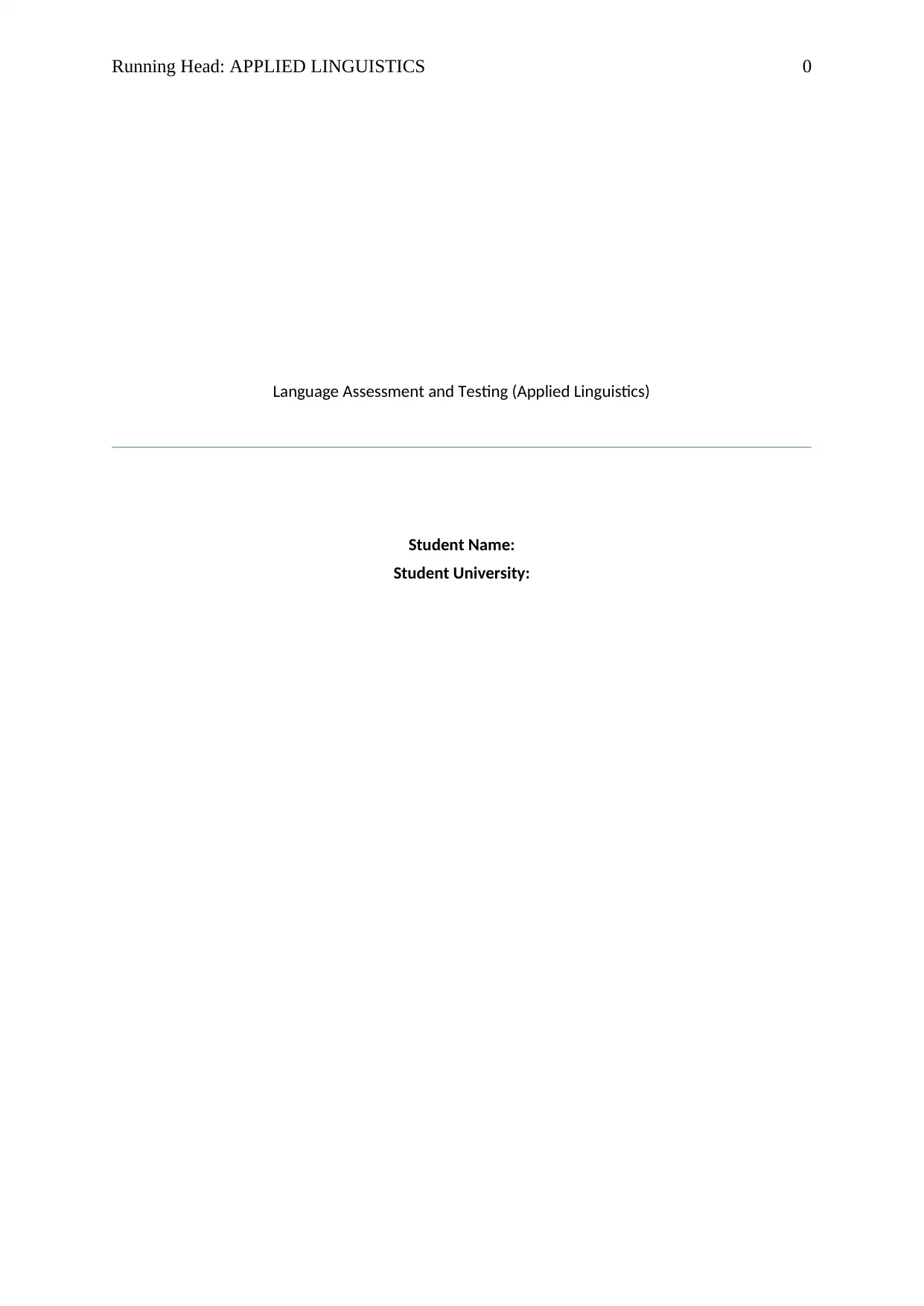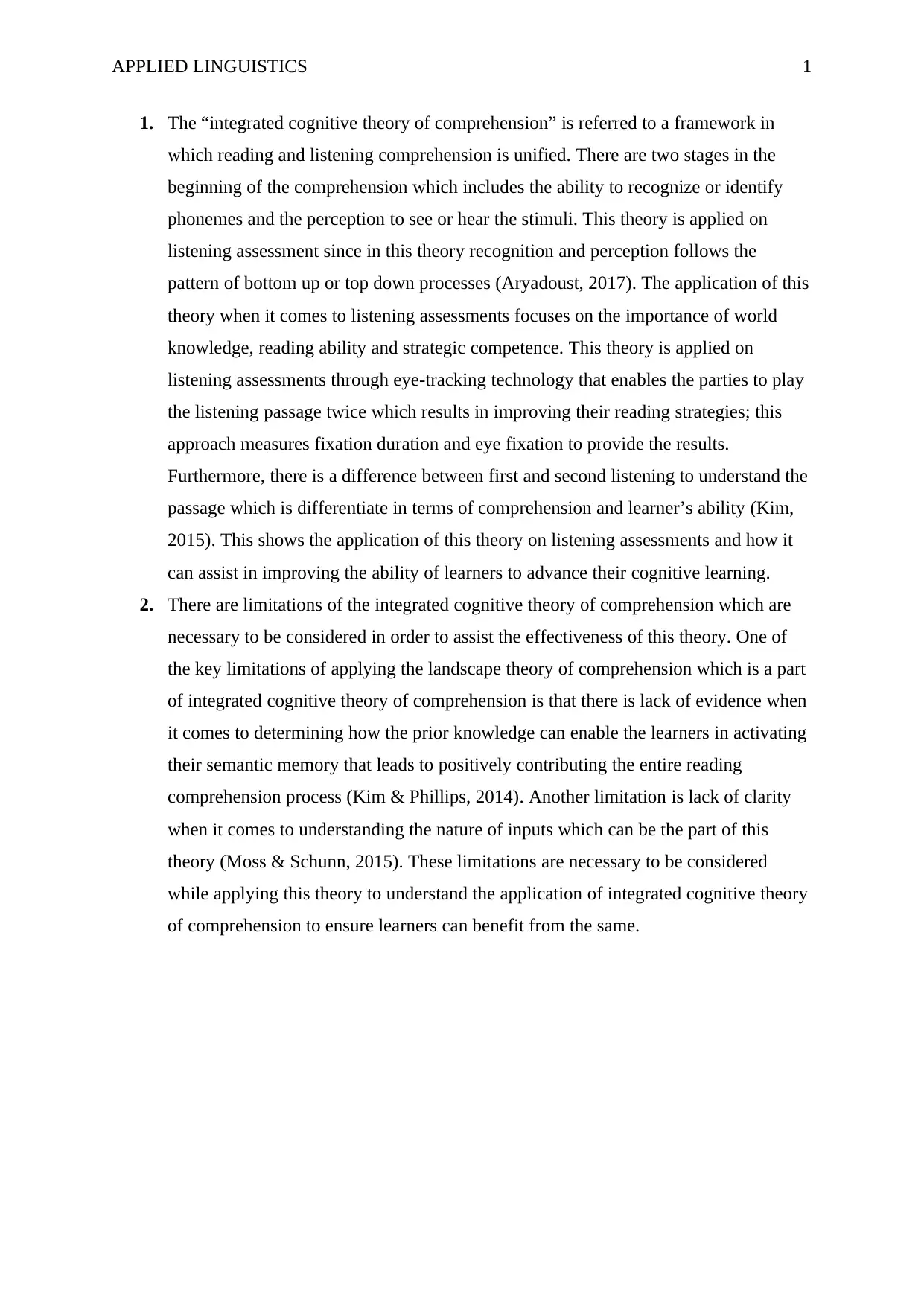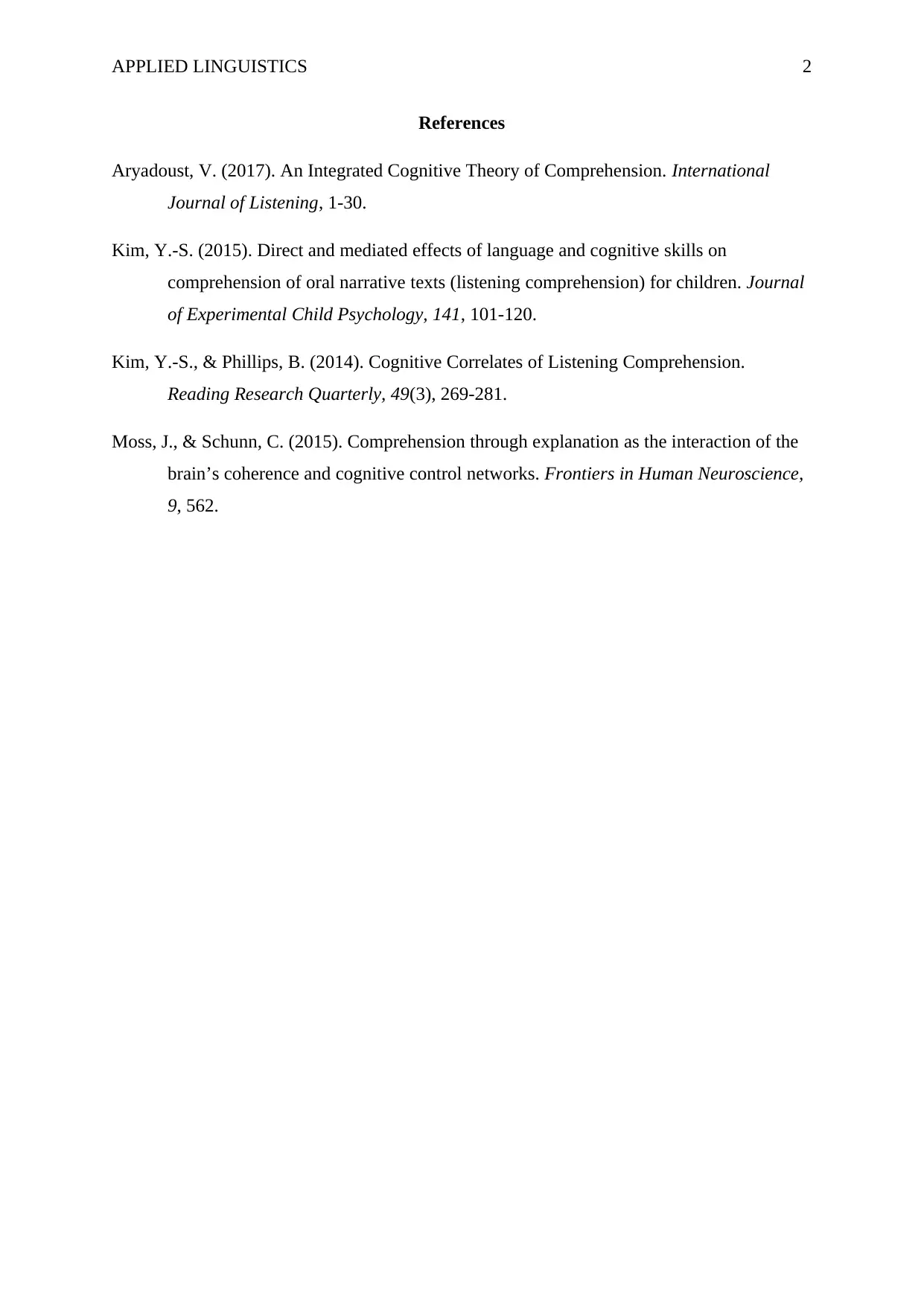University Applied Linguistics: Comprehension Theory Assessment
VerifiedAdded on 2022/08/12
|3
|511
|23
Essay
AI Summary
This essay explores the integrated cognitive theory of comprehension, a framework unifying reading and listening comprehension, emphasizing bottom-up and top-down processing. The theory is applied to listening assessments, highlighting the importance of world knowledge, reading ability, and strategic competence. The application involves eye-tracking technology, allowing for repeated listening passages to improve reading strategies and comprehension. The essay also addresses limitations, such as the lack of evidence on how prior knowledge activates semantic memory and the unclear nature of inputs. These limitations are crucial for understanding the theory's effectiveness and ensuring learners benefit from it. The provided solution is sourced from the International Journal of Listening and focuses on the work of Vahid Aryadoust, along with supporting research from Kim and Phillips, and Moss and Schunn.
1 out of 3





![[object Object]](/_next/static/media/star-bottom.7253800d.svg)